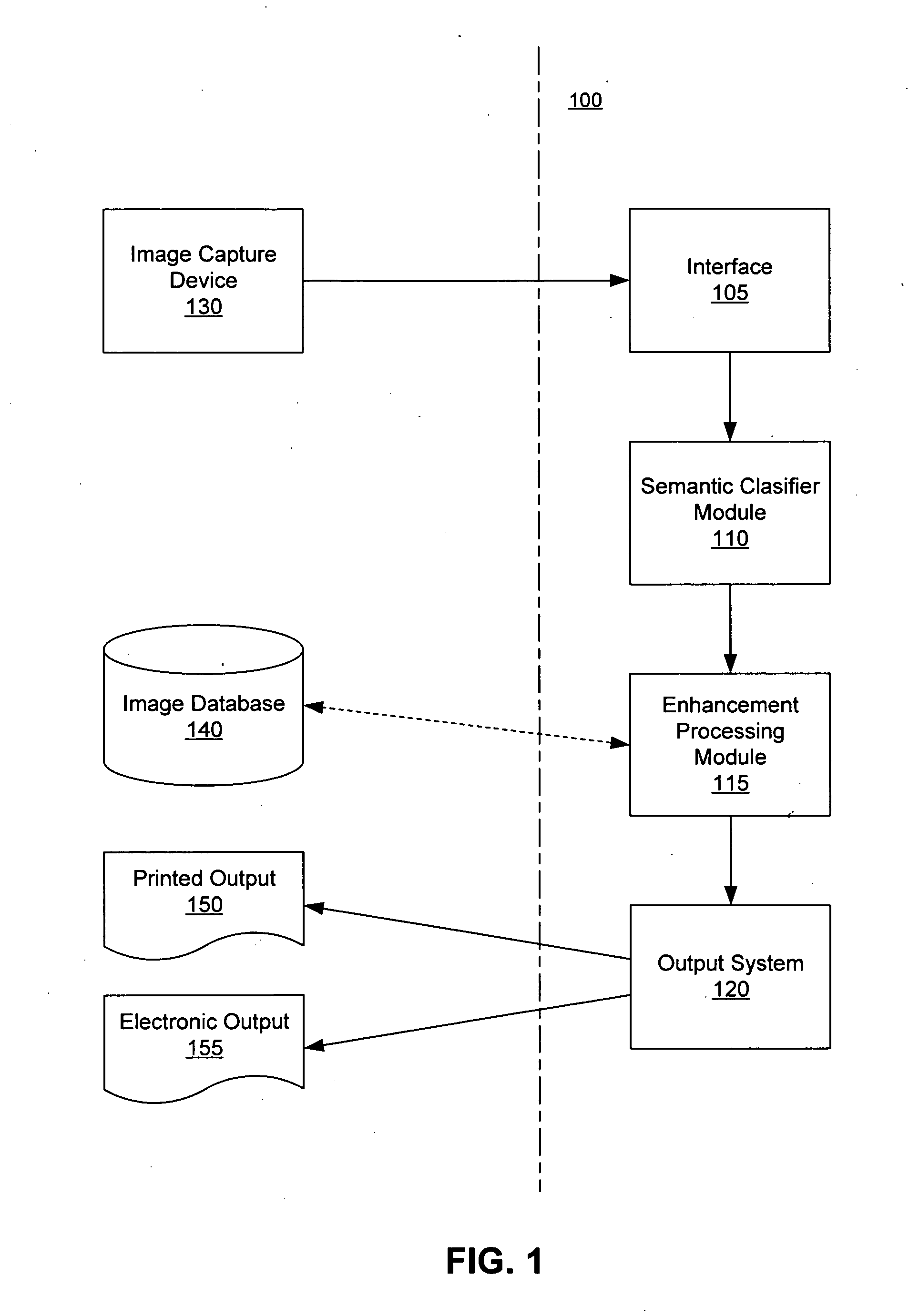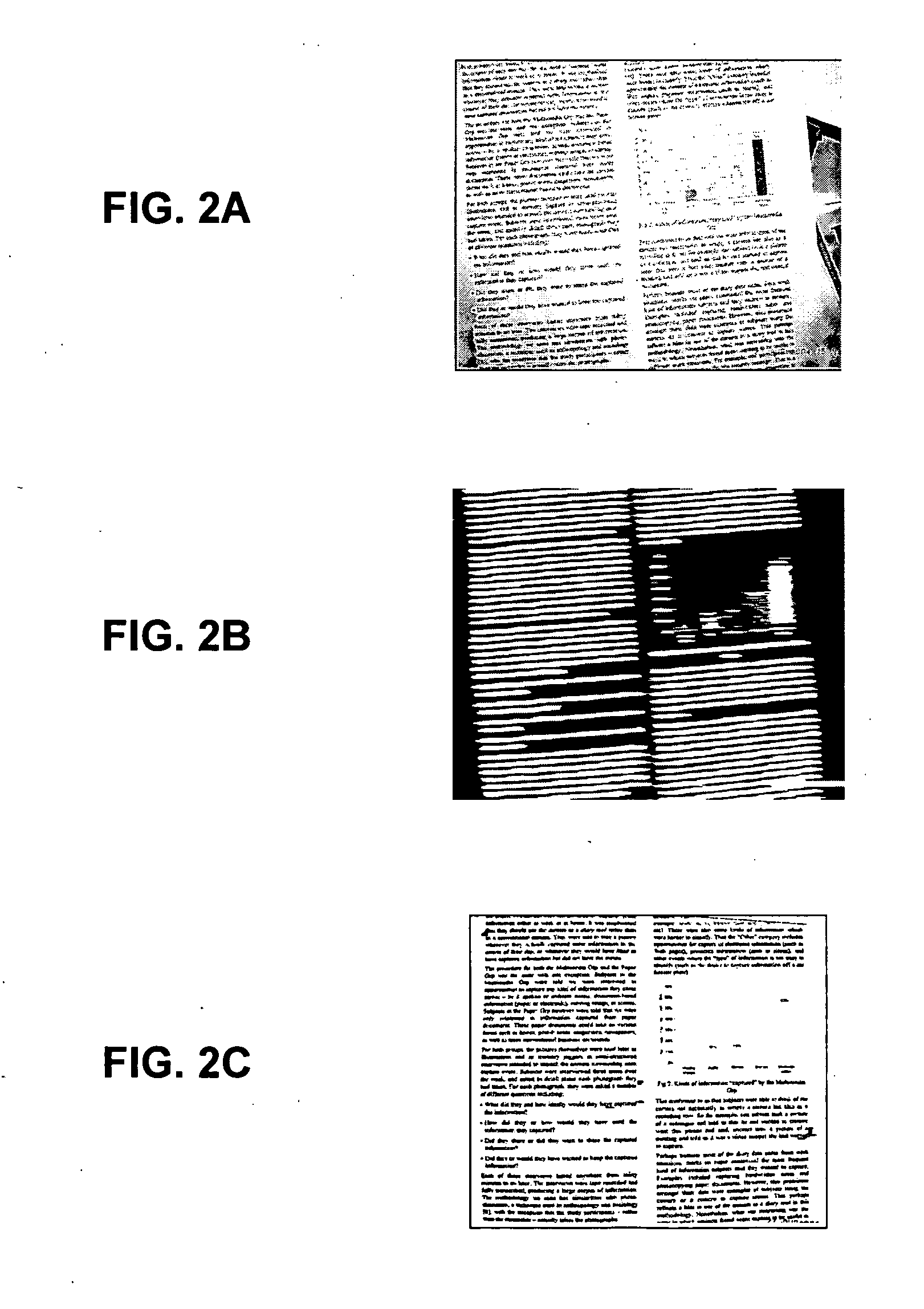Semantic classification and enhancement processing of images for printing applications
a technology for enhancement processing and printing applications, applied in the field of printing, can solve the problems of not improving printing images, office workers generally have little time for classification and organizing images, and fundamental limitations remain, so as to improve printing representation and enhance processing of images
- Summary
- Abstract
- Description
- Claims
- Application Information
AI Technical Summary
Benefits of technology
Problems solved by technology
Method used
Image
Examples
Embodiment Construction
System Overview
[0016] Various embodiments of a printing system enable the printing of enhanced images using a semantic classification scheme. FIG. 1 is a high-level diagram of a flow process in which captured images are received, classified, and enhanced for printing, in accordance with one embodiment of the invention. A printing system 100 includes an interface 105, which can receive an image to be printed from an image capture device130. The image capture device 130 may be a digital camera, a cellular phone with camera functionality, a video recorder, a video or still picture output device, a picture scanner, or any other device capable of producing an image suitable for printing. Accordingly, the printing system 100 may receive the image from any of a number of sources, including a computer, a network device, a portable device having media storage (e.g., a digital camera), a media broadcast, or any of a number of different sources. Depending on the source, the interface 105 of ...
PUM
 Login to View More
Login to View More Abstract
Description
Claims
Application Information
 Login to View More
Login to View More - R&D
- Intellectual Property
- Life Sciences
- Materials
- Tech Scout
- Unparalleled Data Quality
- Higher Quality Content
- 60% Fewer Hallucinations
Browse by: Latest US Patents, China's latest patents, Technical Efficacy Thesaurus, Application Domain, Technology Topic, Popular Technical Reports.
© 2025 PatSnap. All rights reserved.Legal|Privacy policy|Modern Slavery Act Transparency Statement|Sitemap|About US| Contact US: help@patsnap.com



